AKT/GSK3β signaling pathway is critically involved in human pluripotent stem cell survival
- PMID: 27762303
- PMCID: PMC5071844
- DOI: 10.1038/srep35660
AKT/GSK3β signaling pathway is critically involved in human pluripotent stem cell survival
Abstract
Human embryonic and induced pluripotent stem cells are self-renewing pluripotent stem cells (PSC) that can differentiate into a wide range of specialized cells. Basic fibroblast growth factor is essential for PSC survival, stemness and self-renewal. PI3K/AKT pathway regulates cell viability and apoptosis in many cell types. Although it has been demonstrated that PI3K/AKT activation by bFGF is relevant for PSC stemness maintenance its role on PSC survival remains elusive. In this study we explored the molecular mechanisms involved in the regulation of PSC survival by AKT. We found that inhibition of AKT with three non-structurally related inhibitors (GSK690693, AKT inhibitor VIII and AKT inhibitor IV) decreased cell viability and induced apoptosis. We observed a rapid increase in phosphatidylserine translocation and in the extent of DNA fragmentation after inhibitors addition. Moreover, abrogation of AKT activity led to Caspase-9, Caspase-3, and PARP cleavage. Importantly, we demonstrated by pharmacological inhibition and siRNA knockdown that GSK3β signaling is responsible, at least in part, of the apoptosis triggered by AKT inhibition. Moreover, GSK3β inhibition decreases basal apoptosis rate and promotes PSC proliferation. In conclusion, we demonstrated that AKT activation prevents apoptosis, partly through inhibition of GSK3β, and thus results relevant for PSC survival.
Figures
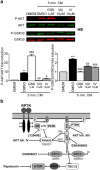
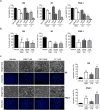
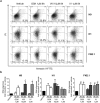


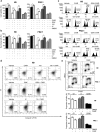
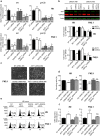
Similar articles
-
Lithium activates the Wnt and phosphatidylinositol 3-kinase Akt signaling pathways to promote cell survival in the absence of soluble survival factors.Am J Physiol Renal Physiol. 2005 Apr;288(4):F703-13. doi: 10.1152/ajprenal.00189.2004. Epub 2004 Nov 30. Am J Physiol Renal Physiol. 2005. PMID: 15572521
-
miRNA-125b regulates apoptosis of human non-small cell lung cancer via the PI3K/Akt/GSK3β signaling pathway.Oncol Rep. 2017 Sep;38(3):1715-1723. doi: 10.3892/or.2017.5808. Epub 2017 Jul 12. Oncol Rep. 2017. PMID: 28713974
-
CDK1-PDK1-PI3K/Akt signaling pathway regulates embryonic and induced pluripotency.Cell Death Differ. 2017 Jan;24(1):38-48. doi: 10.1038/cdd.2016.84. Epub 2016 Sep 16. Cell Death Differ. 2017. PMID: 27636107 Free PMC article.
-
Enhanced TLR4 Expression on Colon Cancer Cells After Chemotherapy Promotes Cell Survival and Epithelial-Mesenchymal Transition Through Phosphorylation of GSK3β.Anticancer Res. 2016 Jul;36(7):3383-94. Anticancer Res. 2016. PMID: 27354597
-
AKT/GSK3β Signaling in Glioblastoma.Neurochem Res. 2017 Mar;42(3):918-924. doi: 10.1007/s11064-016-2044-4. Epub 2016 Aug 27. Neurochem Res. 2017. PMID: 27568206 Free PMC article. Review.
Cited by
-
Identification of m7G-Related LncRNA Signature for Predicting Prognosis and Evaluating Tumor Immune Infiltration in Pancreatic Adenocarcinoma.Diagnostics (Basel). 2023 May 11;13(10):1697. doi: 10.3390/diagnostics13101697. Diagnostics (Basel). 2023. PMID: 37238181 Free PMC article.
-
Optical Genome Mapping Reveals Genomic Alterations upon Gene Editing in hiPSCs: Implications for Neural Tissue Differentiation and Brain Organoid Research.Cells. 2024 Mar 14;13(6):507. doi: 10.3390/cells13060507. Cells. 2024. PMID: 38534351 Free PMC article.
-
Global REACH 2018: dysfunctional extracellular microvesicles in Andean highlander males with excessive erythrocytosis.Am J Physiol Heart Circ Physiol. 2021 May 1;320(5):H1851-H1861. doi: 10.1152/ajpheart.00016.2021. Epub 2021 Mar 12. Am J Physiol Heart Circ Physiol. 2021. PMID: 33710927 Free PMC article.
-
Excess active P13K rescues huntingtin-mediated neuronal cell death but has no effect on axonal transport defects.Apoptosis. 2019 Apr;24(3-4):341-358. doi: 10.1007/s10495-019-01520-4. Apoptosis. 2019. PMID: 30725352 Free PMC article.
-
Resveratrol modulates the Akt/GSK-3β signaling pathway in a middle cerebral artery occlusion animal model.Lab Anim Res. 2019 Oct 15;35:18. doi: 10.1186/s42826-019-0019-8. eCollection 2019. Lab Anim Res. 2019. PMID: 32257906 Free PMC article.
References
-
- Thomson J. A. et al.. Embryonic stem cell lines derived from human blastocysts. Science 282, 1145–1147 (1998). - PubMed
-
- Takahashi K. et al.. Induction of pluripotent stem cells from adult human fibroblasts by defined factors. Cell 131, 861–872 (2007). - PubMed
-
- Bottcher R. T. & Niehrs C. Fibroblast growth factor signaling during early vertebrate development. Endocr. Rev. 26, 63–77 (2005). - PubMed
-
- Dvorak P. et al.. Expression and potential role of fibroblast growth factor 2 and its receptors in human embryonic stem cells. Stem Cells 23, 1200–1211 (2005). - PubMed
Publication types
MeSH terms
Substances
LinkOut - more resources
Full Text Sources
Other Literature Sources
Molecular Biology Databases
Research Materials

